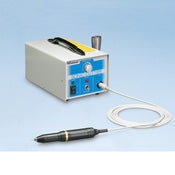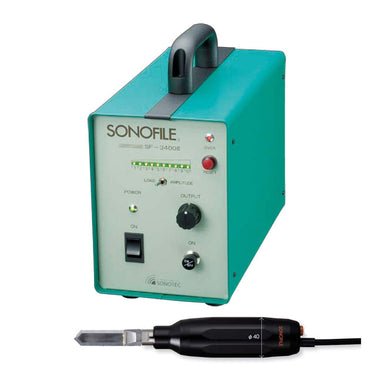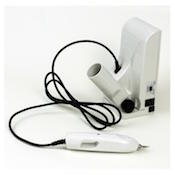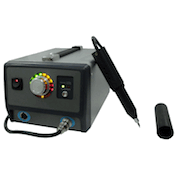-
Home
›
Ultrasonic Cutting Systems
Ultrasonic Cutting Systems
An ultrasonic transducer creates a vibrating blade, enabling the cutting edge to more easily slice through a wide range of materials – thin plastics sheets, rubber, paper products, woven and non-woven materials, and even carbon fiber pre-preg. Available models are designed around hand-held pieces, or mountable transducers for use with industrial robots, plotters, and automated machinery. Ultrasonic cutters are essentially cutting or trimming tools utilizing a vibrating ultrasonic horn to assist the cutting action of sharp utility knife blades. Ultrasonic vibrations are transmitted to the end of the blades resulting in a substantially smoother and even cutting action.
Our ultrasonic cutters can smoothly cut difficult-to-cut materials. They are small in size and do not require large installation areas. Special equipment is not required for the installation. They are small enough to be hand-held for many operations. They can also be attached to automated machinery arms. Although they may not be familiar to you, they play an active role in the manufacturing processes of various industrial products which we use daily. Please contact us for a free sample test cut to select the model ultrasonic cutter best suitable for your needs. Sound is a vibration that is transmitted through a medium, such as air, water, and metals. Ultrasonic waves are an "inaudible sound," the frequency of which generally exceeds 20 kHz. A 20-kHz frequency means that a certain medium vibrates 20,000 times per second. The ultrasonic cutter vibrates its blade with an amplitude of 10 - 70 µm in the longitudinal direction. The vibration is microscopic, so it cannot be seen. The movement repeats 20,000 - 40,000 times per second (20 - 40 kHz). Because of this movement, the ultrasonic cutter can easily cut resin, rubber, nonwoven cloths, film, composite materials in which various products are superposed, and food. The ultrasonic cutter is composed of a "transducer" that generates vibration and an "oscillator" that drives the transducer. A piezoelectric element is used for the transducer. When voltage is applied, the piezoelectric element displaces the transducer by a few micrometers. Periodically applying voltage generates vibration. Each object has its special frequency, by which the object is stable and easy to vibrate. By adding an external force that corresponds to that special frequency, a small force can obtain a large vibration. This phenomenon is called resonance. In the ultrasonic cutter, the piezoelectric element generates a force that resonates the whole body, from the transducer to the blade tip, generating a large vibration at the tip. The oscillator periodically generates voltage to resonate and drive the transducer. Using a component of the ultrasonic cutter called the horn to ring the cross-sectional area, from the piezoelectric element to the blade tip, can obtain a larger vibration.
The NSK Nakanishi Sonic Cutter system is an excellent, low-cost system capable of cutting a wide variety of paper goods, plastics, leather, and woven materials. The Sonofile ultrasonic cutting systems utilize more powerful control units designed for heavier-duty and continuous-use cutting applications. Sonofile® ultrasonic units are designed to be integrated into manufacturing applications, such as with robotics and automated equipment, or used as a tool for cutting and deburring. On/Off operation and amplitude changes can be performed from the remote controls. The Sonofile® cutters can output error signals, such as overload notifications. (Specifications vary according to the model). Ultrasonic cutters can also be used easily as a hand tool; click on the link to the YouTube video demonstration below.
Some commons uses for ultrasonic cutters:
• Cut vehicle interior materials
• Cut carbon fiber pre-preg for aircrafts
• Deburr and gate-cut resin-molded products
• Half-cut multilayer materials
Other examples of how the Sonofile® cutters can be used:
• To clean fossils
• To cut breads
• To cut geological sections (clay layers)
• To remove rust, paint, and extraneous matter
• To edge process film materials (rounding of angular parts)




